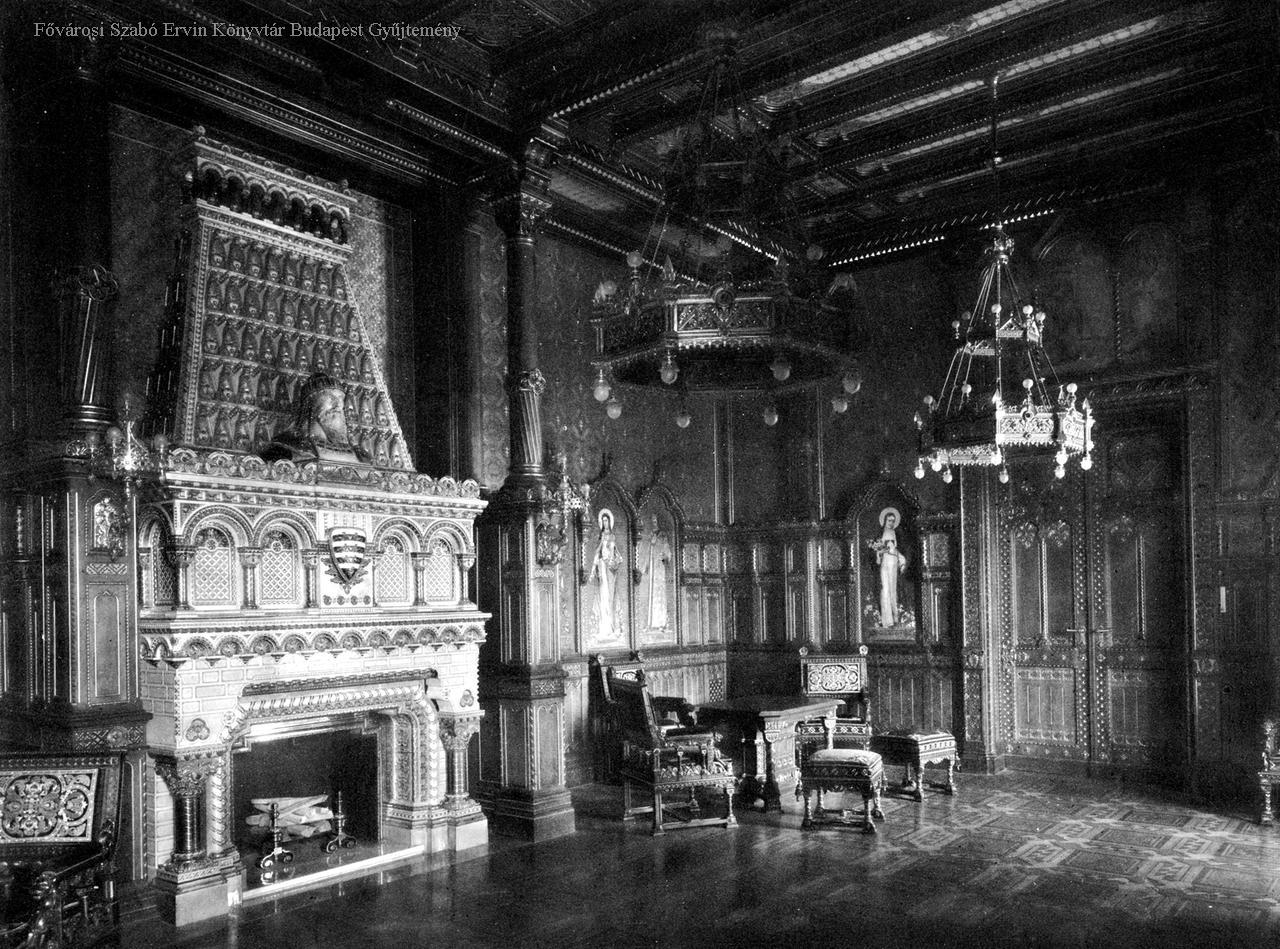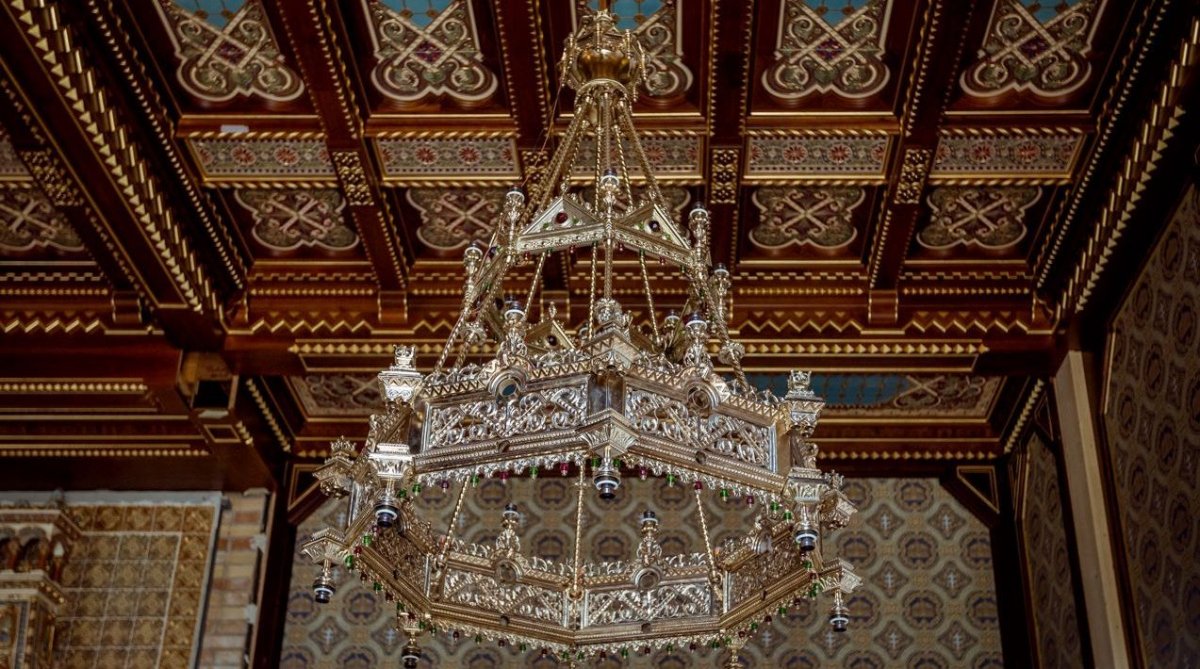The multi-year works of the reborn St. Stephen's Hall are coming to an end, the first reconstructed, ornate historic interior of the Buda Castle will be open to the public from 20 August - as it can be read in the press release sent to our newspaper by the Várkapitányság. Named after the founding king of the state, the hall at the turn of the century was one of the most significant interiors of the Royal Palace of Buda, dreamed up by Alajos Hauszmann. The architect asked the outstanding creators of contemporary Hungarian applied art to create the interior decorations.

The St. Stephen's Hall in 1912 (Source: FSZEK Budapest Collection)
The Várkapitányság recalled that the first step in the revival of the legendary site was the reconstruction of a part of the building completely destroyed in World War II, the southern connecting wing, which was carried out by specialists under the National Hauszmann Program.
In the last stage of the works, the central creation of the hall is already complete: the largest Zsolnay fireplace in the country, nearly one and a half tons, more than 4.5 meters high and 2.5 meters wide. The more than a hundred elements and the meticulously crafted more than 600 pieces of the work of art were joined together with a special adhesive mortar and gilded. As the closing chord of the work, the bigger than life-sized bust of St. Stephen, originally created by the sculptor Alajos Strobl, was put to its original place, on the main ledge of the fireplace.
The Zsolnay fireplace and the bust of St. Stephen on it (Photo: Várkapitányság)
Part of the re-created Zsolnay fireplace (Photo: Várkapitányság)
The inlaid parquet decorated with dragon motifs and the ornate, gilded side wall have also been completed. The Várkapitányság also informed that after the installation of the spectacular ceiling with coffered parts, the pyrogranite royal paintings were also put in their places. The special porcelain paintings made after the original paintings of the painter Ignác Roskovics, which can still be seen in the Parliament, depicting the defining personalities of the Árpád Dynasty: The figures of Béla I, Saint Ladislaus, Coloman the Learned, Béla III, Andrew II, Béla IV and Andrew III and Prince St. Emeric, St. Elizabeth and St. Margaret appear in the special techniques.
Images of kings in St. Stephen's Hall: Andrew II , St. Elizabeth and Béla IV (Photo: Várkapitányság)
.jpg)
Images of kings in the St. Stephen's Hall: St. Ladislaus, Coloman and Béla III (Photo: Várkapitányság)
The wall paintings above the doors, also made of pyrogranite, consisting of several panels, evoke a historical scene: on one, St. Stephen and St. Gerard preach Christianity, on the other, the apostolic coronation of Stephen and the founding of the state.
After several years of work, three special chandeliers, each weighing 150 kilograms, were also placed on the ceiling of the room. Also in place are the sconces, the design of which rhymes with the motif of the inlaid floor: the 5-5 bulbs branch out from a dragon figure and are decorated with polished glass stones.
The special chandeliers of the room were originally made in the factory of Rudolf Kissling, now they have been re-made by the professionals based on photos, after several years of work (Photo: Várkapitányság)
The original chandeliers and wall sconces were made in Kissling Rudolf’s factory, with only a few samples and archival photographs surviving, on the basis of which the professionals reconstructed the models of the luminaires, the decorative glass, gemstone and metal elements. The special lighting of the room is provided by a perfect copy of a total of ninety-two pieces, the so-called St. Stephen's bulb, writes the Várkapitányság.
.jpg)
The special lighting of the room is provided by a copy of a total of 92 so-called St. Stephen's bulbs (Photo: Várkapitányság)
All the elements of the chandeliers and sconces cast in the final form are the same as the original, but at the same time they had to meet today's lighting requirements. The lighting was designed so that the gleaming lights on the gilded surfaces and glass ornaments would illuminate St. Stephen’s Hall.
The reborn historical room and the related exhibition will be open to the public from 20 August. In the first days, you can visit St. Stephen's Hall free of charge.
Source: Várkapitányság
Cover Photo: The chandelier of St. Stephen's Hall has already been replaced (Photo: Várkapitányság)






































Hozzászólások
Log in or register to comment!
Login Registration